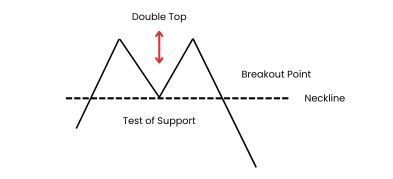Important Information
This website is managed by Ultima Markets’ international entities, and it’s important to emphasise that they are not subject to regulation by the FCA in the UK. Therefore, you must understand that you will not have the FCA’s protection when investing through this website – for example:
- You will not be guaranteed Negative Balance Protection
- You will not be protected by FCA’s leverage restrictions
- You will not have the right to settle disputes via the Financial Ombudsman Service (FOS)
- You will not be protected by Financial Services Compensation Scheme (FSCS)
- Any monies deposited will not be afforded the protection required under the FCA Client Assets Sourcebook. The level of protection for your funds will be determined by the regulations of the relevant local regulator.
Note: Ultima Markets is currently developing a dedicated website for UK clients and expects to onboard UK clients under FCA regulations in 2026.
If you would like to proceed and visit this website, you acknowledge and confirm the following:
- 1.The website is owned by Ultima Markets’ international entities and not by Ultima Markets UK Ltd, which is regulated by the FCA.
- 2.Ultima Markets Limited, or any of the Ultima Markets international entities, are neither based in the UK nor licensed by the FCA.
- 3.You are accessing the website at your own initiative and have not been solicited by Ultima Markets Limited in any way.
- 4.Investing through this website does not grant you the protections provided by the FCA.
- 5.Should you choose to invest through this website or with any of the international Ultima Markets entities, you will be subject to the rules and regulations of the relevant international regulatory authorities, not the FCA.
Ultima Markets wants to make it clear that we are duly licensed and authorised to offer the services and financial derivative products listed on our website. Individuals accessing this website and registering a trading account do so entirely of their own volition and without prior solicitation.
By confirming your decision to proceed with entering the website, you hereby affirm that this decision was solely initiated by you, and no solicitation has been made by any Ultima Markets entity.
I confirm my intention to proceed and enter this websiteMaster the KDJ Indicator: A Trader’s Guide
In the fast-paced world of trading, identifying the right entry and exit points can make all the difference. That’s where technical indicators like the KDJ indicator (also known as the random index) come in. As a derived form of the traditional stochastic oscillator, the KDJ indicator introduces an additional component—the J line—which helps traders pinpoint potential reversals with greater clarity.
In this article, we’ll explore how the KDJ works, how to calculate it, how to interpret its signals, and how to apply it effectively in both short-term and long-term trading strategies.
What Is the KDJ Technical Indicator?
At its core, the KDJ is a momentum-based indicator used in technical analysis to assess market trends and potential turning points. It’s a close cousin of the stochastic indicator, which compares a security’s closing price to its price range over a set period. What sets the KDJ apart is its inclusion of an extra line called the J line, which enhances sensitivity to price movements.

The indicator consists of three key components:
- %K (k value): Reflects the current price’s position relative to the recent high-low range. The k values are used in the calculation.
- %D (d value): A smoothed version of %K, providing a more stable signal. The d value is crucial for interpreting market trends.
- %J (extra line called the J line): A calculated value derived from K and D—specifically: %J = 3K – 2D, it magnifies movements and helps identify extreme market conditions.
These lines oscillate between 0 and 100. When the %J line crosses above 100 or drops below 0, it may signal that the market is overbought or oversold—an early warning for a possible reversal.
How Does the KDJ Indicator Work?
The KDJ is considered a lagging indicator, meaning it reacts to market movements rather than forecasting them. Still, its real value lies in how the three lines interact.
When the J line crosses above both the K and D lines from a lower region, this line break—commonly called a golden cross—is often seen as a short term buy signal, especially when accompanied by oversold signals. Such signals can often precede periods where prices rise. Conversely, when the J line crosses below them from a higher region, this line break—commonly called a dead cross—may suggest a sell signal or that a trend reversal is on the horizon.
Traders usually watch for the so-called “golden crosses” (K crossing above D) and “dead crosses” (K crossing below D) to support their trading decisions.
These interactions are most useful in range-bound markets, where momentum shifts frequently and volatility is manageable.
How to Calculate the KDJ Indicator

While most trading platforms automatically calculate KDJ, understanding the math behind it can help you customise the indicator for your own strategy.
Here’s a breakdown of how it’s calculated:
- RSV (Raw Stochastic Value) is calculated first:
- The RSV value is determined by comparing the closing price to the lowest price and highest price over the nth day, certain period, or specific period. The calculation formula uses prices (high, low, close) as follows:
- RSV = (Close − Lowest Price(n)) / (Highest Price(n) − Lowest Price(n)) × 100
- %K is then derived as a smoothed average of the RSV value:
- %K = (2/3) × Previous %K + (1/3) × RSV
- %K = (2/3) × Previous %K + (1/3) × RSV
- %D is a moving average of %K:
- %D = (2/3) × Previous %D + (1/3) × %K
- %D = (2/3) × Previous %D + (1/3) × %K
- Finally, %J is calculated:
- %J = 3 × %K – 2 × %D
The default settings (9, 3, 3) refer to the periods used in these calculations. However, these can be adjusted based on your trading timeframe and the volatility of the asset you’re analysing.
Identifying Overbought and Oversold Conditions with KDJ
One of KDJ’s most practical uses is in identifying potential reversal zones. When the J line pushes above 80—or even over 100—it may indicate an overbought market where prices could soon decline. Conversely, when it dips below 20 or drops into negative territory, the market may be oversold, setting the stage for a bounce.
These zones become even more meaningful when accompanied by line crossovers. For example, if the K line crosses above the D line while both are in the oversold area, it may be a strong buy signal. Likewise, a downward crossover in overbought conditions could signal it’s time to sell.
How to Use KDJ in Your Trading Strategy
The KDJ indicator works best when used alongside other technical tools. While it offers timely signals, combining it with additional confirmation techniques can help filter out noise and reduce the risk of false signals.
For instance, if the KDJ lines are near the lower bound and the J line crosses above the K and D lines, it could be a buy signal, particularly if confirmed by other indicators like MACD or RSI. On the flip side, if the lines cluster at the top and J starts to drop through K and D, it may indicate weakening momentum and signal a good time to sell.
Many traders also combine KDJ with candlestick patterns, moving averages, or support/resistance levels to filter out noise and reduce false signals.
Combining KDJ with Death Cross and Golden Cross Strategies
To build a more comprehensive investment strategy, many traders combine the KDJ indicator with classic technical analysis tools like the death cross and golden cross. These strategies use moving averages to identify major trend shifts: a golden cross occurs when a shorter-term moving average (such as the 50-day) crosses above a longer-term moving average (like the 200-day), generating a buy signal. Conversely, a death cross happens when the shorter-term moving average crosses below the longer-term one, signaling a potential sell signal.
When the KDJ indicator aligns with these moving average crossovers, the signals become even more powerful. For instance, if the KDJ shows an oversold condition—such as the J line below 20—and a golden cross appears, it can reinforce the case for a buying opportunity. On the other hand, if the KDJ indicates an overbought market and a death cross forms, it may strengthen the argument for taking profits or initiating a sell. By combining KDJ with these well-known technical analysis strategies, traders can better identify potential trend reversals and make more confident trading decisions.
Backtesting the KDJ Indicator: How to Validate Your Strategy

Before relying on the KDJ indicator as part of your investment strategy, it’s crucial to validate its effectiveness through backtesting. Backtesting involves applying your KDJ-based strategy to historical price data over various time periods to see how well it would have performed in identifying overbought and oversold conditions. This process helps you understand the indicator’s strengths and weaknesses, and whether it consistently delivers reliable buy and sell signals.
Through backtesting, many traders find that KDJ is particularly reliable on daily charts and works well in sideways markets where momentum frequently shifts.
Limitations of the KDJ Indicator in Identifying Overbought and Oversold Conditions
Like all technical tools, the KDJ isn’t foolproof. It can be too sensitive in volatile markets, generating frequent and misleading signals. Since it’s a lagging indicator, it also responds after a price move has already started—making it less effective on its own in fast-trending markets.
That’s why it’s crucial to use the KDJ in conjunction with other tools and always have a clear risk management plan in place.
Customising KDJ for Better Results
Default settings are a good starting point, but you may need to fine-tune KDJ based on your trading style:
- Use shorter periods for day trading and quick momentum plays.
- Stick to daily or weekly charts for swing or position trades.
- Adjust the smoothing periods to reduce signal noise in high-volatility assets like cryptocurrencies.
- Try using KDJ on Heikin Ashi charts for a cleaner visual representation and improved signal clarity.
Common Mistakes to Avoid When Using KDJ
While the KDJ indicator is a practical technical indicator for market trend analysis, there are several common mistakes traders should avoid to maximise its effectiveness. One major pitfall is relying solely on the KDJ’s k and d lines for trading decisions without considering other aspects of technical or fundamental analysis. The indicator works best as part of a broader investment strategy, where it is used alongside moving averages, trend lines, or other technical indicators to confirm signals.
Another frequent mistake is failing to adjust the KDJ’s time periods or parameters to match current market conditions. Markets can shift from trending to range-bound, and the optimal settings for the K and D lines may change accordingly. Sticking to default settings without considering the traded asset’s volatility or the timeframe can lead to missed opportunities or false signals. By regularly reviewing and optimising your KDJ parameters, and by integrating it with other tools, you can make more informed trading decisions and better navigate the complexities of price trends and market fluctuations.
Day vs Long-Term Trading with KDJ
KDJ’s flexibility makes it suitable for different trading styles.
In day trading, KDJ can be used on shorter timeframes—like 5-minute or 15-minute charts—especially in range-bound sessions. It is especially useful for analysing short term stock movements, as traders often look for short bursts of momentum triggered by J line crossovers to execute quick trades.
For long-term trading, such as swing or position trading, the KDJ can help confirm trend continuation or detect early signs of reversals. It can also help identify stock trends over longer periods. In backtests on daily timeframes, KDJ has shown an up to 66% success rate when combined with other tools and proper risk management.
Final Thoughts
The KDJ indicator is a versatile and insightful tool for traders seeking a deeper understanding of market momentum and potential reversal points. While it may not be perfect—especially in highly volatile markets—it offers a valuable layer of confirmation when used alongside other indicators and sound technical analysis.
The key to using KDJ effectively lies in understanding its behavior, optimising its settings, and combining it with other tools to create a comprehensive trading strategy. Whether you’re a day trader looking for quick scalps or a long-term investor seeking strategic entries, KDJ can be a strong addition to your trading toolkit.
Frequently Asked Questions
Q: What’s the difference between KDJ and the stochastic oscillator?
A: The only difference is that KDJ adds an extra line, the J line, to the stochastic oscillator. This J line exaggerates price movements and offers earlier signals, making KDJ (also known as the random index) a more detailed tool for technical analysis.
Q: What is the best timeframe for KDJ?
A: The daily chart is generally most effective, but shorter timeframes can work for day traders in stable, low-volatility environments.
Q: Can I use KDJ for crypto trading?
A: Yes. KDJ is frequently used in crypto markets where momentum plays a big role, but beware of high volatility and false signals.
Q: What’s a golden cross vs. dead cross in KDJ?
A: A golden cross occurs when K crosses above D (bullish), while a dead cross is when K crosses below D (bearish).
Q: How does the KDJ indicator identify a short term bottom?
A: When the J value remains below 10 for several days, it may signal the formation of a short term bottom in the stock’s price, indicating a potential market reversal or support level.
Disclaimer: This content is provided for informational purposes only and does not constitute, and should not be construed as, financial, investment, or other professional advice. No statement or opinion contained here in should be considered a recommendation by Ultima Markets or the author regarding any specific investment product, strategy, or transaction. Readers are advised not to rely solely on this material when making investment decisions and should seek independent advice where appropriate.












